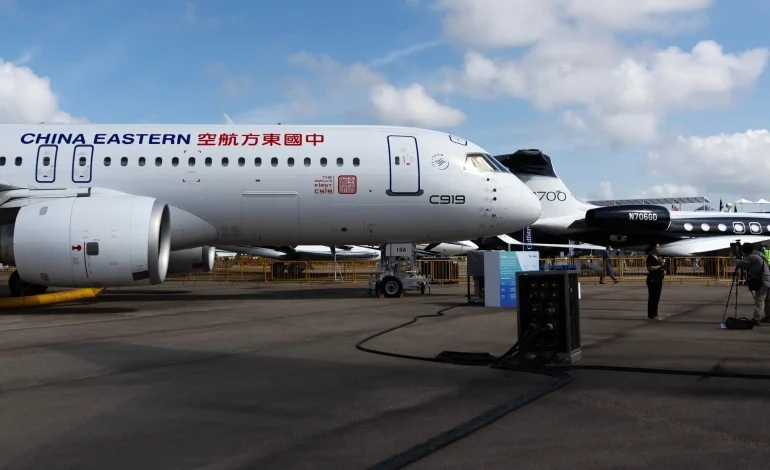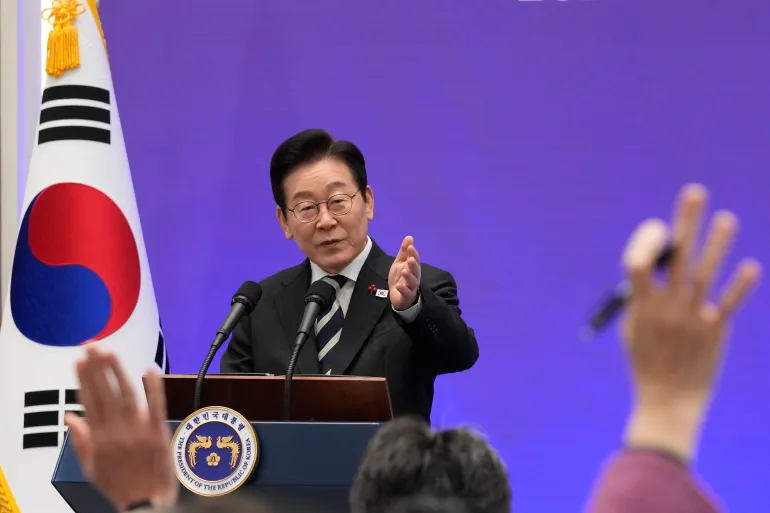US Tightens Export Controls on Chinese Jetliner Project Amid Geopolitical Tensions

The Trump administration has moved to restrict the export of American aerospace technologies to China, a decision with significant implications for Beijing’s ambitions in the commercial aviation sector.
At the center of the policy is the C919, a single-aisle jet developed by the state-owned Commercial Aircraft Corporation of China (COMAC), which has come to symbolize China’s industrial aspirations.
Launched in 2008, the C919 project aimed to break the Western dominance of the commercial aircraft market, long led by Boeing and Airbus. However, the development process faced numerous delays, and the plane did not enter commercial service until 2023—seven years later than initially planned. Despite this, the aircraft has become a point of national pride in China, with state media describing it as a cornerstone of the country’s ambition to become a “great power” in aerospace.
Western companies have played a significant role in building the C919. At least 40% of its components, including engines and avionics systems, come from firms based in the United States and other Western nations. One prominent example is General Electric, which has partnered with the French company Safran to supply the jet’s engines and worked with a major Chinese defense contractor on its avionics.
In Washington, concerns have been growing over the extent to which American technology has contributed to China’s aerospace capabilities. Critics, including former US counterintelligence officials, argue that China has leveraged joint ventures and partnerships to gain access to sensitive intellectual property, raising questions about national security.
The latest move by the Trump administration reflects a broader strategy to tighten control over technology transfers to China. The new restrictions are part of a sweeping effort to prevent Chinese firms, particularly those with military links, from accessing advanced US technologies. According to people familiar with the matter, the administration is also working on rules to prevent subsidiaries of sanctioned companies from acquiring restricted technologies through indirect channels.
Beijing has reacted strongly. A spokesperson for China’s Ministry of Foreign Affairs condemned the new export controls as politically motivated and accused the US of weaponizing trade and technology. China, the spokesperson added, will take steps to protect its national interests.
The political shift contrasts sharply with the early days of the C919 program. When COMAC was established, Western companies welcomed the opportunity to enter the Chinese market, anticipating mutual economic benefits. That period coincided with a more optimistic phase in US-China relations, marked by hopes that economic integration would reduce geopolitical tensions.
Those hopes have since faded. Under President Xi Jinping, China has pursued a more assertive foreign policy and significantly expanded its military capabilities. At the same time, the United States has become more cautious about technology exports, especially to firms tied to China’s military-industrial complex.
Although only 16 C919s were in service at the beginning of 2025, China is now accelerating production, with close to 1,000 orders—mostly from Chinese state-controlled airlines. International certification remains a challenge, with only mainland China and Hong Kong approving the aircraft so far. European and American aviation authorities have yet to certify the plane for broader use, a process that may take several more years.
With input from the New York Times and Bloomberg.









The latest news in your social feeds
Subscribe to our social media platforms to stay tuned